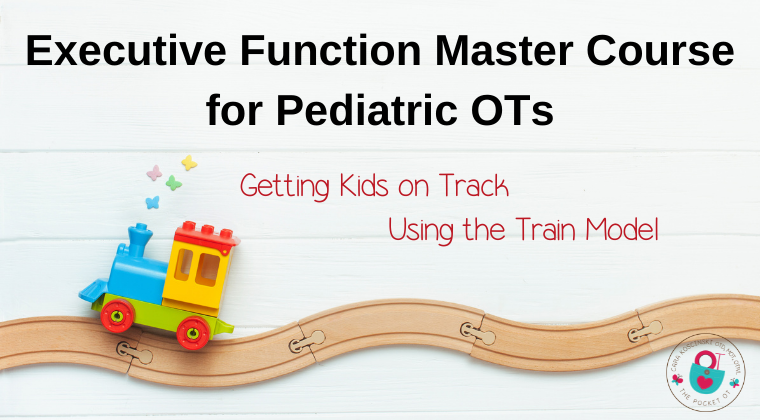
20 Snowman Crafts
Who wants to build a snowman? We do! This week we’ve rounded up some snowman crafts and activities. Each link contains a fun…

As my children grow, my focus as a parent changes. Both of my autistic sons and husband with ADD/ADHD struggle with executive function. That’s what makes my job as ‘The Pocket Occupational Therapist‘ so fun! Not only am I an OT, but I’m also experiencing daily stresses similar to my clients. My latest focus is on learning disorders — especially Executive Function Disorder.
This complex topic requires a great deal of understanding and focus on each child as an individual. Learning disabilities can cause frustration among children. NO CHILD wants to struggle! We all feel stressed when we know WHAT we want to do, but don’t know WHERE to begin. Additionally, caregivers are looking for us as OTs to provide strategies that are designed for building success.
Let’s discuss the basics of executive function disorder in this post.
1) What DOES Executive Function (EF) mean?
To learn MUCH more about EF, take our new course for OTs – Executive Function Master Course – Using the Train Model. AOTA approved for 8.5 hours of continuing ed.
Did you know that multiple parts of our brain coordinate to help us analyze, plan, adjust, organize, execute (carry out), and even decide WHAT’s important in our lives? Kids have never been a CEO of a company and it’s our job to relate our activities to something FUN and that helps with buy-in. That’s why I created a model called the Train Model to help visualize the concepts of EF. It’s a fun way to learn about the skills we need for each task from making choices, to dressing and handwriting. Every one of us requires a plan of execution for each task we complete. We also need to be flexible as the world around us changes. Just think about how you felt when the COVID pandemic uprooted all we knew!
As babies, we function using built-in reflexes that are designed for survival and safety. With experience, genetics, and as we learn new skills, our brains develop ‘wiring’ that connects different areas together. Our FRONTAL lobe and pre-frontal cortex are mainly responsible for EF, which includes planning, thinking, personality, and making decisions.
2) Our frontal lobe does not fully mature until our mid-twenties!
As babies develop, their brain makes critical connections. With experience, beautiful connections are made and when we are successful, are more likely to repeat the activity.
There’s an old saying that The Brain That WIRES Together, Fires Together. It’s true then, that we need a great deal of experience and practice as we grow to make complicated decisions. That’s why we aren’t able to drive until our mid-teens and drink alcohol until twenty-one (in the US).
3) In order to complete a task, we need to decide what is important in our environment.
Our system is constantly bombarded by sensory stimuli. Sights, sounds, smells, feelings, and tastes are among the things we must manage. For us to pay attention to something, we need to ignore another, competing stimulus. Sounds simple, right? Not for someone with a sensory processing disorder or a learning disability. Sometimes paying attention to the teacher is extremely difficult when a student cannot stop focusing on their ‘itchy’ collar or that buzzing fluorescent lighting. Others might have a difficult time stopping their Pokemon Go game to work on a book report that’s due next week. Maintaining a balanced ‘sensory’ activity diet is critical for our students with sensory processing difficulties.
ADD/ADHD brings additional challenges in attending to the task at hand.
 |
| ALL you need for school settings! |
4) Making predictions can help children learn planning and taking things apart and putting them together in a new way helps us to problem-solve. This is called ‘metacognition.’
It’s technically ‘playing with’ our ideas to come up with out-of-the-box solutions or improving on the decisions we’ve make in life. Brainstorming and then forming new combinations helps us to be more creative, flexible, and assists with problem-solving.
BONUS TIP!! Use the new Train Model of Executive Function and Regulation.
Check out our Executive Function Course!This model is new and provides a visual representation for every skill involved in EF. The best part is, the model talks about the importance of regulation and interoception.
5) If a student experiences difficulty in the areas of time-management, beginning a task, creating solutions, and prioritizing then she is struggling with executive function components.
Gaining an understanding of how our brain completes tasks helps to form support systems such as visual charts, IEP goals, and reminders. Time management is an abstract concept but is so important to our daily life. Something called ‘time blindness’ can impact success at home and in school. Here’s a video explaining more about it.
I hope this post has given some helpful information about executive function. My goal is to look at children through an EF lens and consider learning differences as a root cause of behavioral problems. Every child desires to succeed and it’s up to us to be detectives.
If you’re a therapist, teacher, or caregiver, I’ve designed my books, talks, and webinars to give hundreds of strategies that can be used immediately for success.
Looking for more information? Read my helpful post about working memory here.



